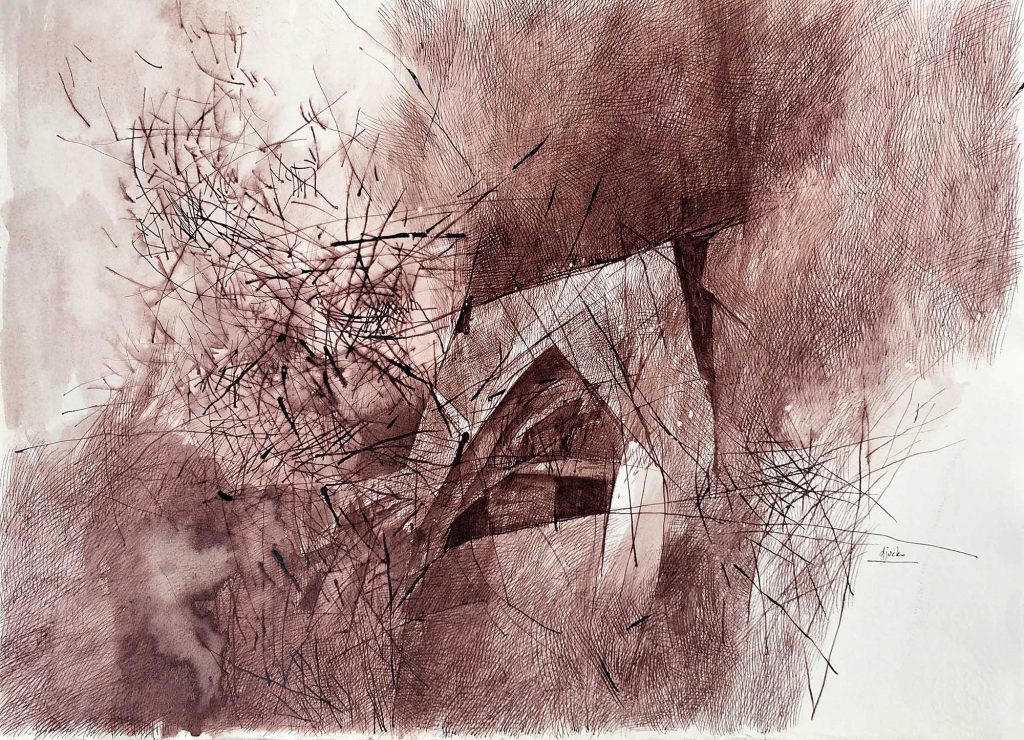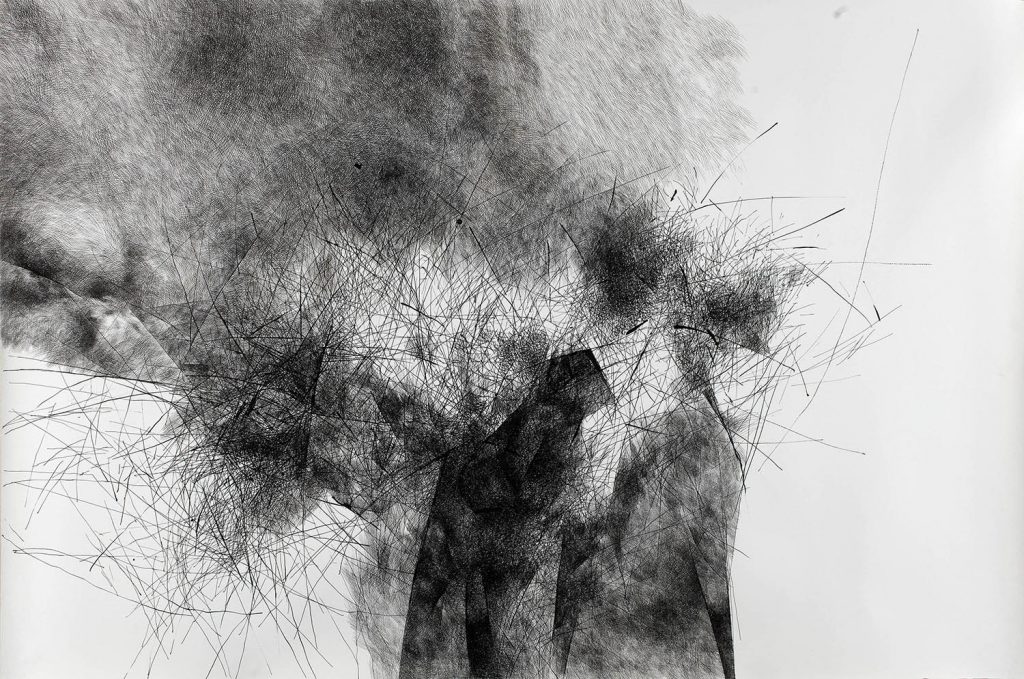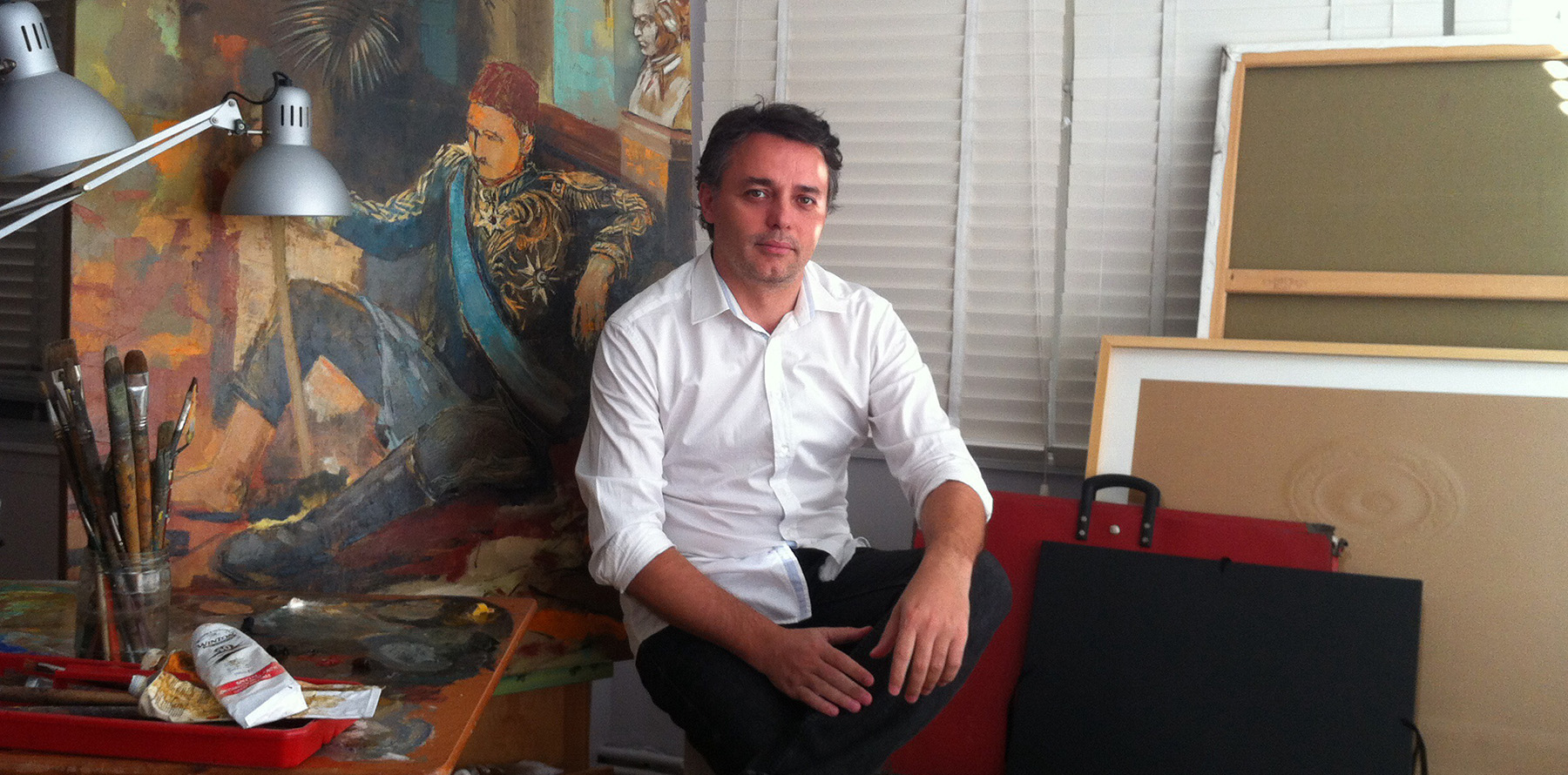The new member of the Art50.net family, Coşkun Sami is an artist and intellectual who improved himself in every sense of the word and approaches art history with a genuine passion. We enjoyed diving into an ocean of knowledge with Sami who carries the influence of the years he spent growing up in Bulgaria and who often draws artistic inspiration from the Russian-Soviet history of art and artists.
When and how did your interest in art emerge?
In every young artist’s portfolio there’s the cliché “I have been interested in visual arts since my childhood”; in fact, this has an element of truth. But one should also consider the environment’s influence in addition to the child’s curiosity. The place where I grew up in Bulgaria was considerably small and in Turkish urbanization standards, it could even be referred to as remote. It had a total population of 50 thousand; yet it had three movie theaters, two theaters, a gallery with a majestic Neo-Baroque façade and a rich collection, and the oldest city park in the Balkan Peninsula. Most importantly, there was this bookstore at the very center of the city that was a true treasury. Here you could find relatively more popular books including very high quality catalogs from world museums and French artists’ monographs as well as very valuable things like facsimile editions of prints by Dürer or Rembrandt. I think they rearranged their shop window on a monthly basis. They did thematic arrangements like Dresden Gallery books, Picasso, Michelangelo or Tiziano. My first serious contact with art took place there, I guess. Starting from my elementary school years, the top of my gift list always included an art album. This was the zeitgeist of that period; people were proud of the Russian cars they bought with great difficulty as well as the richness of their home libraries. Then came the more determining things like still life paintings and busts made at the mid-school painting club, the selection of fine arts as my high-school department, and voilà, your future path has been drawn. I had very good professors; they were all Academy graduates, people who could draw well, paint well and knew art history very well. All high schools of fine arts in Bulgaria eventually aimed for the Academy. For instance, the painting department had only twelve annual posts with hundreds of high school graduates competing for them; the competition was unbelievable. Good skills in portrait, still life, figure or nude were not special gifts; they were standard training.

How did you come from Bulgaria to Turkey?
My family wisely avoided the 1989 “immigrant” glut. I first finished high school, and when I couldn’t enter the Academy despite my top position in the waiting list, I came to Istanbul to enquire about education opportunities; of course I fell in love with the Byzantine heritage. An essay about Byzantine art by Yves Bonnefoy was deeply influential on me. He compared its ecstatic but subtle beauty to a silver fountain gently flowing in the background. Hagia Sophia, Zeyrek, Kariye, the cisterns and walls blew my mind. I did long promenades in Topkapı and Edirnekapı; at that time, everything was different and terrific there as well. For me, Turkey both had a dynamic and an “authentic” spirit, i.e. the typical touristic viewpoint like that of Du Camp or Flaubert. On the other hand, to be honest, while I was considerably knowledgeable about Byzantium and its art, the Ottoman part was a black box for me. At the end of the day, my interest in Byzantium combined with Sinan’s mosques and Mehmet Siyah Kalem, and thus the dice were rolled. I’ve been to Bursa, but having seen the level of its faculty of education, department of painting, it became a must for me to study at the Mimar Sinan University.
I think your works contain several references to art history. I almost feel like you made the Renaissance geniuses clash with the 20th-century Russian Avantgarde artists. What would you like to say about this? What are your sources of knowledge and inspiration?
In my opinion, art history is an area every artist must have in-depth knowledge of. But as there aren’t decent museums in the country we live in, and as we learn everything from the books only, a sense of reality does not develop around it; it remains as a romantic illusion. To make up for my lack of knowledge in this area, I took history lessons at the École du Louvre for a year; right after class, you could actually see almost all the original works that you saw in the slides during the lecture. It’s necessary to be able to feel a brush’s movement, to discover a retouched chest, a semi-complete sky or a 19th-century artist with less recognition, to see everyone in the same place, important or not, and to build your mental sequences accordingly. It’s only when you have this kind of opportunity that you can become friends with the artists, let alone know the art history. You both develop professionally and you build a different bond with painting and art, and this pushes you to reconsider certain things. I think we should use the categories that they made us memorize to place the right words on the right shelves only. Art is something timeless; it doesn’t matter if it’s classical, modern or contemporary. For instance, Bruegel can actually be painfully contemporary; the way he depicts children taken from their mothers, the shade of red in the blood flowing under the weight of the hanging swords, folks helplessly running here and there, and some people gorging at some table at the opposite corner while all this happens… Aren’t these things that happen right before us, that we witness and experience already? We should both be able to pick something from this gigantic accumulation called “classical art” and use it as we wish, or act as if it doesn’t exist if that’s what we want to do, just like what the painters of the historical avant-garde did. In this sense, you have actually made a good point; I have a special interest in Russian and Soviet painters, but this is not a simple nostalgia for the lifestyle of the former socialist block. I’m lucky to be able to read Russian; this way I can access sources that have not been translated. The discourses, statements and lives of the avant-garde artists of that period involved such enormous failures and disappointments that, in comparison to them, today’s artistic problems seem like children’s play. In fact, most of them paid the heaviest of prices; they went lost within the turmoil of that epoch. For instance, Mayakovsky committed suicide, while Harms died of starvation. These people have an all-encompassing agenda; they talk about building a new future, transforming the society through revolution, travelling in space, and even bringing the dead back to life. Such a level of radicalization makes one tremble. Of course, the tensions within this entire heritage provide me with a point of departure; this is why my works often feature the structures of failed utopias. I can’t say they are that optimistic; but at least they don’t have a completely hedonistic viewpoint either.

You’re an artist who also does illustrations and graphic design works. In your opinion, what is the nature of the relationship between your paintings and the works in these other two areas?
I approach graphic design as a source of income. Thanks to it, I can stay independent from the gallery system and I don’t need to paint in accordance with “the market’s pulse”. On the other hand, illustration is as special a field to me as is drawing; they often overlap anyway. At times I illustrate poetry books and other times I illustrate posters. My latest project was a poster illustration for a theater play titled “Divane Ağaç” by Turgay Nar, a very old friend of mine, at the Ankara State Theater. Again, these days I’m working on a “carnet de voyage” about Istanbul and a children’s book I want to leave to my little daughter. I hope I can realize the first printed editions of both next year.
The artists you admire and follow, both in Turkey and abroad? And your impressions on the attitude that contemporary artists’ in our country have towards drawing?
Although there are many names that I admire and follow, the first ones coming to my mind include Şevket Sönmez, Erinç Seymen, Ahmet Sarı, Güçlü Öztekin, Ahmet Doğu İpek, Nur Gürel, Emin Mete Erdoğan, Tayfun Gülnar, Begüm Mütevellioğlu and Görkem Dikel. I can also add artists like Mehmet Güleryüz and Yüksel Arslan from previous generations that use paper and drawing very skillfully. There are too many names from the world; but I always have this interest in the genuinely experimental, new and different. By “new” I don’t mean that sweet and marketable point of intersection of those sets of emotions that are either “accepted” or “on the verge of acceptance” by the audience; that’s the advertisers’ area. But my radar is always open for those radical experiences, new sensitivities and investigations that don’t rely on Instagram’s closed-circuit, infinite mirror effect. Unfortunately, on the other hand, drawing education in Turkey is rather mediocre. As educational institutions don’t follow a curriculum in this regard, young people are left to their own devices. Prejudices like “Marmara prefers the linear while Mimar Sinan likes the chiaro-scuro” emerge that are completely based on myths. On top of this, we add the abundance of private universities and the situation becomes even more ridiculous. If the artist-to-be wants to create something on any kind of surface, he or she obviously must receive a good drawing education. Otherwise, he or she can’t pass the exams, let alone become professional. They graduate anyway; but at the end of the day, the things they do immediately offend the eye and aren’t taken seriously.

How did your paths cross with Art50.net? What kind of contributions do you think online platforms have for the artists?
I became part of Art50.net as a result of their invitation. Online platforms obviously bring you visibility. In terms of PR, they bring about considerable improvements in search engines and your name begins to appear in more places. But most importantly, they open up a new platform of expression. I find Art50.net’s attitude successful and consistent in this regard.
Your upcoming projects in the near future?
In terms of exhibition, except for my participation in a group show at the Artist fair in November, I have no plans for Turkey for the next six months. But for the spring and the summer of next year, we are planning a group exhibition featuring three artists that will tour three cities in Bulgaria. It will involve alternative presentation techniques like drawings of several meters, gel prints and LED installations; I hope that one day we have the chance to exhibit them in Istanbul as well.
Click for the artist’s page.

